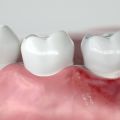10 Remedies for Quick Shoulder Pain Relief

Shoulder pain can be a long-term hindrance to daily life and mobility. In this blog, we will delve into the topic of rapid treatment for shoulder discomfort, looking at effective solutions that go below the surface.
Discover the reasons, types, and practical solutions, including the critical function of physical therapy, to help you live a more comfortable and mobile life. Say goodbye to shoulder pain and enjoy a new era of ease.
How Do I Know What Type Of Shoulder Pain I Have?
Knowing the nature of your shoulder pain is critical for effective treatment. Here's a detailed guide to help you determine the sort of shoulder pain you're experiencing.
Localized Pain
- Pain in a specific part of the shoulder.
- Possible causes include muscle strain, ligament sprain, or local inflammation.
- Determine the exact spot of discomfort and any specific movements that cause it.
Radiating Pain
- Pain radiating from the shoulder to adjacent locations.
- Possible causes include nerve compression and transferred pain from other regions.
- Consider whether the discomfort spreads down the arm or into the neck and is accompanied by tingling or numbness.
Sharp or Stabbing Pain
- Intense, sharp pain with a stabbing feeling.
- Possible causes include rotator cuff damage, bursitis, and nerve impingement.
- Evaluate pain severity, especially during certain motions or activities.
Dull Ache or Throbbing Pain
- Persistent, low-grade pain.
- Possible causes include chronic illnesses such as arthritis and persistent muscle stress.
- Take note of the length and variables that intensify or ease the dull ache.
Pain During Specific Movements
- The pain caused by specific acts or positions.
- Possible causes include tendonitis, impingement, and muscular imbalances.
- Document the activities that consistently cause pain, as well as the range of motion.
Pain with Joint Movement
- Pain caused by joint mobility.
- Possible causes include arthritis, joint inflammation, and cartilage difficulties.
- Pay attention to any discomfort you feel when doing joint movements like reaching upwards or rotating your shoulders.
Nighttime Pain
- Increased pain during the night.
- Possible causes include rotator cuff injury, bursitis, and bad sleeping posture.
- Consider whether your discomfort worsens or interferes with sleep, particularly when lying on the afflicted side.
The 10 Remedies For Quick Relief From Shoulder Pain
Let's look at various shoulder pain cures, from basic practices like rest to more specific treatments like massage therapy. These treatments offer a comprehensive solution for rapid relief.
These strategies offer a comprehensive plan for quick comfort and movement. Let's take a look at each option for recovering your shoulder peak and getting rapid relief.
1. Rest. Exploring natural solutions for shoulder discomfort, such as rest and specific workouts, can help you recover faster.
2. Cold compress. Using a cold compress reduces inflammation and numbs the affected area.
3. Heat therapy. Once the damage has stabilized and healed, heat therapy improves blood flow and oxygen levels. Heat causes moderate vibrations, which aids cell repair in the wounded areas.
4. Pain relievers sold without a prescription. Aspirin, ibuprofen, and naproxen, or NSAIDs, are over-the-counter drugs that efficiently relieve pain and inflammation.
5. Gentle shoulder exercises. Gentle exercises for shoulder pain can help strengthen and stretch shoulder muscles. Consult a healthcare professional for workout recommendations based on your specific condition.
6. Posture correction. Poor posture might lead to shoulder pain. Simple changes to your sitting and standing posture can have a huge impact.
7. Ergonomic adjustments. Evaluate your workstation and everyday routines. Ergonomic modifications, such as optimum chair height or keyboard placement, can help reduce shoulder soreness.
8. Massage therapy. Massage treatment, when combined with physical therapy, improves blood circulation, reduces stiffness, and increases mobility—all of which are essential for effectively treating shoulder issues.
9. Topical analgesics. Topical creams or patches with analgesic qualities can provide localized relief by numbing the skin and surrounding tissues.
10. Compression and support. Compression sleeves or shoulder braces can help support and relieve tension, particularly during vigorous activity.
Other articles and publications:
Articles and publications of other companies:
- +1 (646) 270-9836
- Long Island City
- grantny.com












